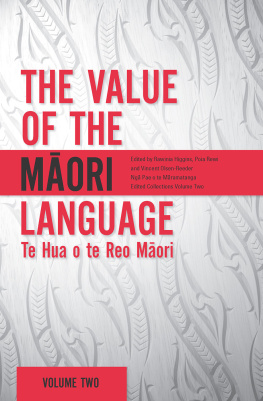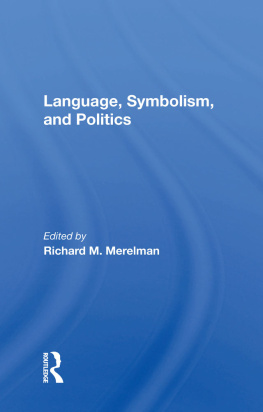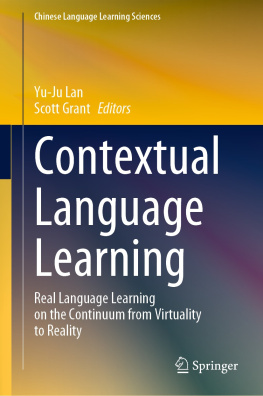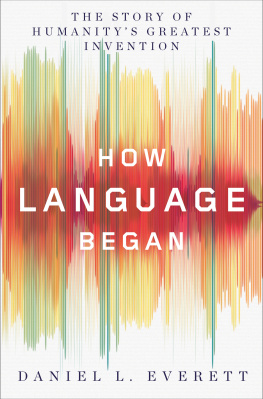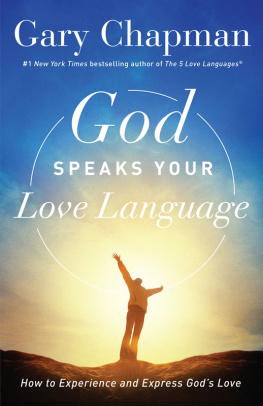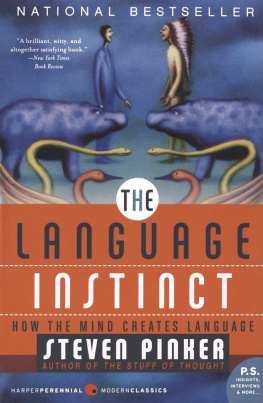Contents
List of Figures
List of Table
Guide
Pagebreaks of the print version
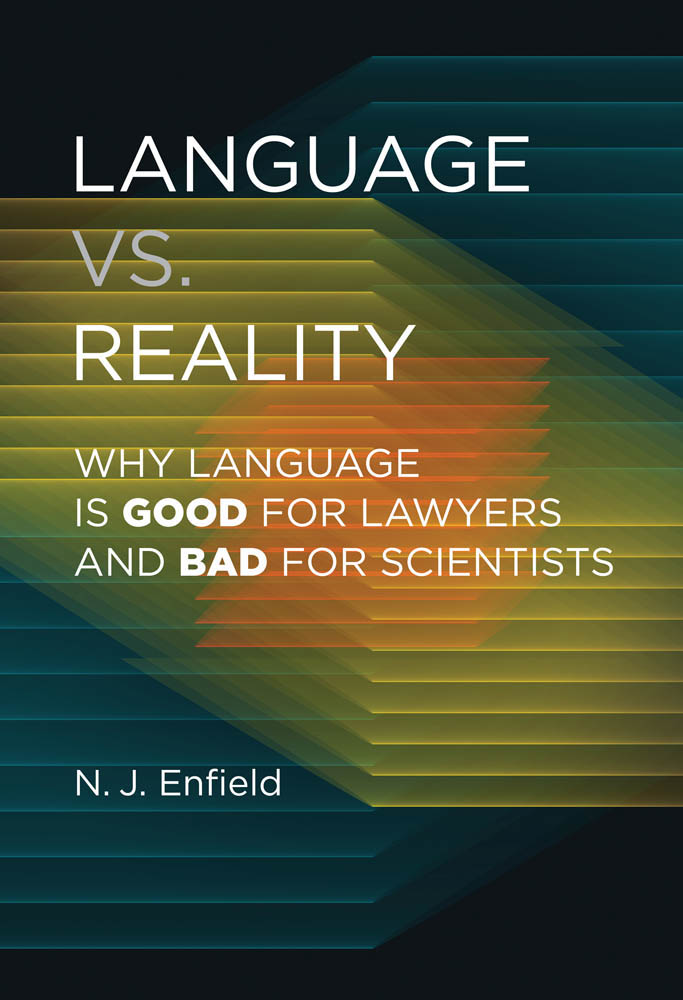
Language vs. Reality
Why Language Is Good for Lawyers and Bad for Scientists
N. J. Enfield
The MIT Press
Cambridge, Massachusetts
London, England
2022 Massachusetts Institute of Technology
All rights reserved. No part of this book may be reproduced in any form by any electronic or mechanical means (including photocopying, recording, or information storage and retrieval) without permission in writing from the publisher.
The MIT Press would like to thank the anonymous peer reviewers who provided comments on drafts of this book. The generous work of academic experts is essential for establishing the authority and quality of our publications. We acknowledge with gratitude the contributions of these otherwise uncredited readers.
Library of Congress Cataloging-in-Publication Data
Names: Enfield, N. J., 1966 author.
Title: Language vs. reality : why language is good for lawyers and bad for scientists / N. J. Enfield.
Description: Cambridge, Massachusetts : The MIT Press, 2022. | Includes bibliographical references and index.
Identifiers: LCCN 2021010579 | ISBN 9780262046619 (hardcover)
Subjects: LCSH: CommunicationSocial aspects. | Cognition. | Psycholinguistics.
Classification: LCC P95.54 .E54 2022 | DDC 401/.9dc23
LC record available at https://lccn.loc.gov/2021010579
d_r0
Contents
List of Figures
Schellings map: Two parachutists, at points X and Y, must coordinate and find each other by going to where they think the other will go, each knowing that the other has the same map. After Thomas C. Schelling, The Strategy of Conflict (Cambridge, MA: Harvard University Press, 1960), 55.
The spectrum of electromagnetic radiation, highlighting the part that is directly perceivable by humans. Image adapted from https://upload.wikimedia.org/wikipedia/commons/3/30/EM_spectrumrevised.png.
Two layers of simplification: reality is reduced by perception, perception is reduced by language.
Array of tangram figures arranged by directors and matchers. After Herbert H. Clark and Deanna Wilkes-Gibbs. Referring as a Collaborative Process. Cognition 22, no. 1 (1986): 139, https://doi.org/10.1016/0010-0277(86)90010-7.
Variation in terms for parts of the body across eight languages. From Simon Devylder et al., Carving the Body at Its Joints: Does the Way We Speak about the Body Shape the Way We Think about It? Language and Cognition 12, no. 4 (2020): 577613, https://doi.org/10.1017/langcog.2020.13; adapted from Asifa Majid and Miriam van Staden, Can Nomenclature for the Body Be Explained by Embodiment Theories? Topics in Cognitive Science 7, no. 4 (2015): 570594, https://doi.org/10.1111/tops.12159.
Coloring-in shows peoples interpretations of the meaning of the words most closely translatable as arm. Image from Asifa Majid, Words for Parts of the Body, in Words and the Mind: How Words Capture Human Experience, ed. Barbara Malt and Phillip Wolff (Oxford: Oxford University Press, 2010), 68, https://doi.org/10.1093/acprof:oso/9780195311129.001.0001.
Hypothesized stages at which different languages divided up the color space into distinct terms (Example color words are from the following languages: stage I = Dani, stage II = Ejagham, stage III = Kwerba, stage IVa = Sirion, stage IVb = Martu-Wangka, stage V = Kalam.
Smell terms in the Jahai language of Peninsular Malaysia. List from Asifa Majid and Niclas Burenhult, Odors Are Expressible in Language, as Long as You Speak the Right Language, Cognition 130, no. 2 (2014): 266270, 269, https://doi.org/10.1016/j.cognition.2013.11.004.
Name the colors as fast as you can.
Read the words as fast as you can.
Name the colors as fast as you can. (Ignore the words!)
Still images from the film used in Tomlins attention experiment. (Figure created by Gus Wheeler, after Tomlin 1995.)
Image from Bocks semantic priming experiment. What do you see? After J. Kathryn Bock, Meaning, Sound, and Syntax: Lexical Priming in Sentence Production, Journal of Experimental Psychology: Learning, Memory, and Cognition 12, no. 4 (1986): 374. https://doi.org/10.1037/0278-7393.12.4.575.
Abstract images after Wulfs 1922 memory experiments. From Friedrich Wulf, Beitrage Zur Psychologie Der Gestalt; vi. ber Die Veranderung von Vomellungen (Gedachtnis Und Gestalt), Psychologische Forschung 1 (1922): 333373.
Image after Wulfs 1922 memory experiments. Image from Wulf, Beitrage Zur Psychologie Der Gestalt, 374.
Star/bird/arrow image after Gibsons memory experiment (at left of line) with redrawings to the right. After James Jerome Gibson, The Reproduction of Visually Perceived Forms, Journal of Experimental Psychology 12, no. 1 (1929): 13.
Hourglass/anvil image after Gibsons memory experiment (at left of line) with redrawings to the right. Gibson, The Reproduction of Visually Perceived Forms,13.
Torso/footprint/dumbbell/violin image after Gibsons memory experiment (at left of line) with redrawings to the right. Gibson, The Reproduction of Visually Perceived Forms, 1415.
Deliberately ambiguous images from the Carmichael et al. 1932 study on language and memory. After L. Carmichael, H. P. Hogen, and A. A. Walter, An Experimental Study of the Effect of Language on the Reproduction of Visually Perceived Form, Journal of Experimental Psychology 15, no. 1 (1932): 75, https://doi.org/10.1037/h0072671.
The 1932 memory study by Carmichael and colleagues showed that ambiguous images are remembered and reproduced differently depending on the words used to describe them. After Carmichael, et al., An Experimental Study, 80.
The trade-off between how simple and how informative a linguistic system is. Languages occupy an optimal frontier along a line that plays the two parameters off against each other. Many theoretical possibilities are unattested (for example, the extreme case of telepathy). After Kemp, Xu, and Regier, Semantic Typology and Efficient Communication, 113.
Trophy or faces?
Necker cube. After L. A. Necker, LXI. Observations on Some Remarkable Optical Phnomena Seen in Switzerland; and on an Optical Phnomenon Which Occurs on Viewing a Figure of a Crystal or Geometrical Solid, The London, Edinburgh, and Dublin Philosophical Magazine and Journal of Science 1, no. 5 (1832): 336, https://doi.org/10.1080/14786443208647909).
Card I from Rorschachs inkblot test.
Card III from Rorschachs inkblot test.
Fixed it: Jane Gilmores correction of the Timess May 9, 2019, headline. http://janegilmore.com/fixedit-everything-in-this-headline-is-just-wrong/.
Pitch trace of Paulas greeting to her close friend Amanda. Adapted from Danielle Pillet-Shore, Greeting: Displaying Stance Through Prosodic Recipient Design, Research on Language and Social Interaction 45, no. 4 (2012): 37598, https://doi.org/10.1080/08351813.2012.724994.
Pitch trace of Paulas greeting to Derik when she is meeting him for the first time. Adapted from Pillet-Shore, Greeting.
Relative timing of Paulas greeting and Deriks response, showing no overlap.
Relative timing of Paulas greeting and Amandas response, showing complete overlap.
Levels of relationship intensity and the approximate sizes of each group.
The standard N400 effect in sentential context. Adapted from Ellen F. Lau, Colin Phillips, and David Poeppel, A Cortical Network for Semantics: (De)Constructing the N400,


